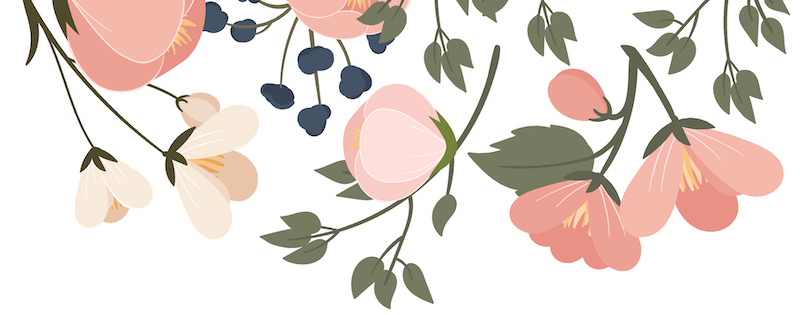So it is that time of the year again, spring is in the air. Local craft faires, special events,
Sims Medieval Edition has been released, and the local
renaissance faires are going on all around you.
With all this excitement in mind, I thought I would take a moment and give you some insight on the
costuming used at the different renaissance fairs (ren faires) to hopefully help you by giving you ideas
for creating your own renaissance period costume, accessories, and character.
Most of these pictures were taken at a renaissance faire that celebrates the Elizabethan era therefore the
costumes you will see will be Elizabethan costumes for peasants, middle class,
tradesmen,
military, gentry and nobility.
Disclaimer: I am not an expert. I am just on observer with keen interest in the costuming of historical periods. If you work at a faire then you need to check with your own costume director to find out what is appropriate for your show role. What I write here is only my observations based on what I have seen or learned from the different actors at these events. Many of the costumes from these faires do not match SCA guidelines, and you would have to check with them to find out their rules on costuming for their events. For a more historically accurate view, I always recommend that you do your own search through the historical archives at your local library or online. I also recommend going to the Lacis website to visit their costume museum to see actual antique accessories, and tools at their online store and museum. They also carry hard to find costuming materials including different types of boning, books, and more.
Now look at the picture below, you probably can not guess the station in life that each actor below portrays through their renaissance costumes (and if you can....cool....you are ahead of the game).
Peasants
Peasants are usually dressed in simple natural fabrics with natural colors. Pay attention to the simple lines in the costume below.
They would not have much money and most of their clothing would have been handed down.
Above and Below are posters of drawings that were cut out from a book to help explain to visitors and
participants how to accessorize their costumes in appropriate gear for their station in life.
So, take a look at the posters above and then look at the female and male actors in the pictures below to
 |
| Male Peasant Costume |
Male Tinker costume (note that he carries all of his goods for trade on his person).
 |
| Female Peasant Costume |
see how the drawings from the poster can be translated into actual costumes.
As for peasant children, let's start with a cute example of an infant in a peasant costume. I imagine that the knitted cap is not quite period but he does look adorable it in. The shirt and pants are period. The tippy cup just helped keep him hydrated (and more importantly....happy), so I could take this picture.
 |
| Peasant baby (minus the tippy cup) |
The children of the peasants would have their hair covered with caps made from natural materials to protect them from the elements and other oddities. Their clothing would be simple and allow room for growth.
 |
| Female Toddler |
The peasant female would have had her hair covered, as the lady does in the picture below.
Her clothing would be of natural colors (see sample color board that she is holding) and
natural fiber materials (such as cotton). That would hold up well over the years.
Again, how does this translate?
Below is an example of two different female peasant outfits. The one to the right would be in a higher station in life than the one on the left (based on accessories). Why? The one to the right is wearing a straw hat with a hat pin, a leather belt with matching bag, and several other valuable accessories....that would indicate that she had the financial means to afford such luxuries.
You can see in the photo below that the woman in the green and burgundy outfit is wearing both a hair net and hat.
Below is an example of two lower class male peasants (ignore the knit cap). Peasants would carry their belongings on them to protect against theft. The socks (if they could afford them or had a wife/mother to knit them) would protect them from bushes, bugs and other potentially alarming nuisances.
The female peasant would usually have their hair covered with a hat of some sort. She would wear a chemise, skirts, and a bodice that tied in the front (as she could not afford a servant to dress her). Her clothing would be of natural fibers, easy to maintain, yet sturdy enough to hold up to the daily grind of hard labor.
Below is an example of both females and males wearing a cap and a hat to protect their heads from the elements.
The Middle Class
The
Middle Class is much more complicated than the peasant class costume. Members of this class were merchants and such.
They wanted to be noticed by the gentry, so they would dress much fancier than the peasants. They could such luxuries as a piece of ribbon. Below is
Below are some examples of the merchant class.
The female below is an example of middle class costume of someone who may be in service to the gentry or royal class.
The female below could be upper middle class or even gentry, depending on her accessories, quality of the material and the cut of her gown. The male in the picture is definitely not "middle class" but portrays his own version of a viking. The picture does not show off his costume effectively, but I am sure you could find several examples by doing a google search of viking images.
 |
| Middle Class to Upper Class Female. The male is not "Middle Class" |
 |
The first two ladies in the picture above are middle class. The ladies in the fancier outfits are gentry. This pictures shows you a side by side comparison in the difference in their accessories and costume.
|
Military and Gentry Examples
An example of military and gentry class costumes.
 |
| Middle Class costume are made from wool and cotton fibers. |
For Military, compare the cut outs below with the picture above. It translates fairly easily! The details would change in accordance with the country or kingdom the military served.
Royal Class, Nobility and Gentry
Here is where the costumes become heavier and much more ornate.
Below is a great example of
Nobility.
Note the jewelry, the fibers, and ornate design of the costumes. Brenda Stewart (who made the costumes featured below) is an amazing costume designer who makes period costumes for different venues. The female is a countess and the gentleman is a knight.
Nobility couple a side view.
Nobility couple a back view.
A close up of the meticulous detail that goes onto the back of these costumes. The designer of this piece put a lot of thought & effort into this. This is a beautiful work of art.
The costumes of the gentry and nobility, would be trimmed with special details in accordance to their wealth.
Pay special attention to the
blackwork on the front of the shirt and the sleeves. In case you are not familiar with
blackwork, it is form of embroidery that uses black thread. It is similar to counted cross stitch but with different details. It was traditionally done in silk.
Here is a close up of the detail blackwork that has been done on this shirt. I love blackwork and this was impressive to see in person. If you are interested in black work, there are ladies doing blackwork demonstrations at this particular faire.
The royals would have jewels, pearls, and other expensive trinkets on their costumes.

Elizabethan ruffles were very popular during this time period for the queen. Having seen this amazing costume up close, I have a lot of respect for the actress to be able to move around and perform with that giant collar and a very heavy costume in the 90° heat.
Another look at those ruffles.
The Queen and her court. The nobility costumes are heavy but that is the price one pays to wear such amazing works of art. Note the differences in not only the accessories but the materials and cut of each costume in accordance with that character's portrayed station in life.
Ladies of the court.

More examples of nobility costumes of the period, the detail work on these costumes are beautiful to see in person. Even the hems have special details that you can not see in these pictures.
Below is an example of one of the many French Gentry costumes.
The female baroness costume below had some very impressive details. There are beads, pearls, and other gemstones that were hand sewn onto the sleeves and skirt. I wish you could see the details on this dress. The baroness is wearing hoops to support the heavy skirt and a bum roll to give her hips more definition (this was a plus in that era).
Additionally, the nobility would had have clothing made of more expensive materials such as silk. The picture below is of a female gentry. The color is a bit off (due to bad lighting issues)....it is not purple or red...but more of a deep wine when you see it in person.
A back view of the same dress.
Members of the nobility and gentry class would have had servants to help them dress. The closures on the female gentry clothing were not normally found in the front of a dress but in the back or side as in the pictures above and below. (
Note: There are always exception to every rule.) Below are more samples of a baroness and knight costumes.
Misc. Costumes
The use of ribbons and trims would be in accordance to the wealth of the character. The difficulty is that modern materials while affordable are not always accurately used in costuming. If you look at the poster below, it is a good example of trim mistakes that can be avoided by sticking to the "approvable" side of the poster.
There really is not a classification for puritans as they could be members of different stations in life. Note the differences in each costume in the picture below.
As for feathers......use them sparingly and wisely. Some may look pretty and fluffy but at the end of the day when you are picking out tree crude from them....well you may wish you had chosen something less attractive to dust balls, dirt, and other items that can get caught in them. Also, you may want to keep in mind that certain feathers were only worn by the gentry and could look out of place on the wrong costume.
Finally, now that you have seen a variety of examples, can you pick out the different stations in life the females in the picture below are depicting through their choice of costumes?
A view of children of the different classes. Again, how easily can you pick out their station in life through their attire?
P.S. if you are wondering why I would bother to put this blog post together, well it started as a request from some of the "Sims Medieval" fans who wanted to see real life examples of the different characters they are creating in the new game. Hazzah to Sims and the many hours of pure entertainment the games provide!
I would love to hear what other people have made and used for their costumes. Leave me a note and share your own experience.
All photographs on this blog are copyrighted.










































































































